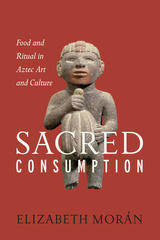Dancing the New World
Aztecs, Spaniards, and the Choreography of Conquest
Winner, Oscar G. Brockett Book Prize in Dance Research, 2014
Honorable Mention, Sally Banes Publication Prize, American Society for Theatre Research, 2014
de la Torre Bueno® Special Citation, Society of Dance History Scholars, 2013
From Christopher Columbus to “first anthropologist” Friar Bernardino de Sahagún, fifteenth- and sixteenth-century explorers, conquistadors, clerics, scientists, and travelers wrote about the “Indian” dances they encountered throughout the New World. This was especially true of Spanish missionaries who intensively studied and documented native dances in an attempt to identify and eradicate the “idolatrous” behaviors of the Aztec, the largest indigenous empire in Mesoamerica at the time of its European discovery.
Dancing the New World traces the transformation of the Aztec empire into a Spanish colony through written and visual representations of dance in colonial discourse—the vast constellation of chronicles, histories, letters, and travel books by Europeans in and about the New World. Scolieri analyzes how the chroniclers used the Indian dancing body to represent their own experiences of wonder and terror in the New World, as well as to justify, lament, and/or deny their role in its political, spiritual, and physical conquest. He also reveals that Spaniards and Aztecs shared an understanding that dance played an important role in the formation, maintenance, and representation of imperial power, and describes how Spaniards compelled Indians to perform dances that dramatized their own conquest, thereby transforming them into colonial subjects. Scolieri’s pathfinding analysis of the vast colonial “dance archive” conclusively demonstrates that dance played a crucial role in one of the defining moments in modern history—the European colonization of the Americas.
The textual, iconographic, and linguistic analyses demonstrate Scolieri's depth and breadth of understanding of the historical and cultural implications of the European colonizing of Mexico. With glossy color plates, well-reproduced black-and-white images, and ten appendixes of translated source material, the book provides a great example of in-depth research using primary sources.
Paul A. Scolieri’s beautifully illustrated Dancing the New World is breathtaking in its intellectual breadth and depth. The book examines the ways in which dance and power were mutually imbricated in a signal moment of modern history—the European colonization of the Americas. Scolieri’s scholarship is rigorous and detailed, but his analyses are particularly compelling because of the theoretical questions he brings to bear on previously under-examined materials. Dance historians always need to grapple with the problem of limited archival sources. Scolieri manages to turn a particularly problematic research site—an archive devastated by the processes of colonization itself—to his advantage, making it an occasion for reflecting on the complexities of all attempts to describe, document and contain dance. For this reason, the book adds significantly not only to ‘New World’ scholarship, but also to theoretical debates in dance history.
...an excellent addition both to conquest scholarship and to the cultural history of colonial Mexico.This is a clearly written work that will appeal to a variety of readers, from the sixteenth-century Mexicanist to the upper-level undergraduate student. . . . Scolieri’s interdisciplinarity is another ofthe book’s strengths; the fields of dance and performance studies, art history, ethnography, and history come together seamlessly in this very fine contribution to conquest historiography.
Scolieri’s scholarship is stunning and unquestionably some of the finest and most accurate I have encountered in my forty years of work in this field . . . I am not aware of any other book in English similar to Scolieri’s treatment of the subject. It is unique and vital scholarship that helps penetrate many mysteries of the Mexican dance legacy.
I thoroughly enjoyed reading this work! . . . Scolieri presents a fascinating and long overdue study that is innovative and interdisciplinary and makes an excellent contribution to the field of colonial Mexican cultural history.
- List of Appendices
- List of Maps and Images
- Acknowledgments
- Introduction
- Chapter 1. On the Areíto: Discovering Dance in the New World
- Chapter 2. Unfaithful Imitation: Friar Toribio de Benavente "Motolinía" and the "Counterfeit" Histories of Dance
- Chapter 3. The Sacrifices of Representation: Dance in the Writings of Friar Bernardino de Sahagún
- Chapter 4. Dances of Death: The Massacre at the Festival of Toxcatl
- Chapter 5. The Mystery of Movement: Dancing in Colonial New Spain
- Conclusion
- Appendices A–J
- Notes
- Bibliography
- Index












